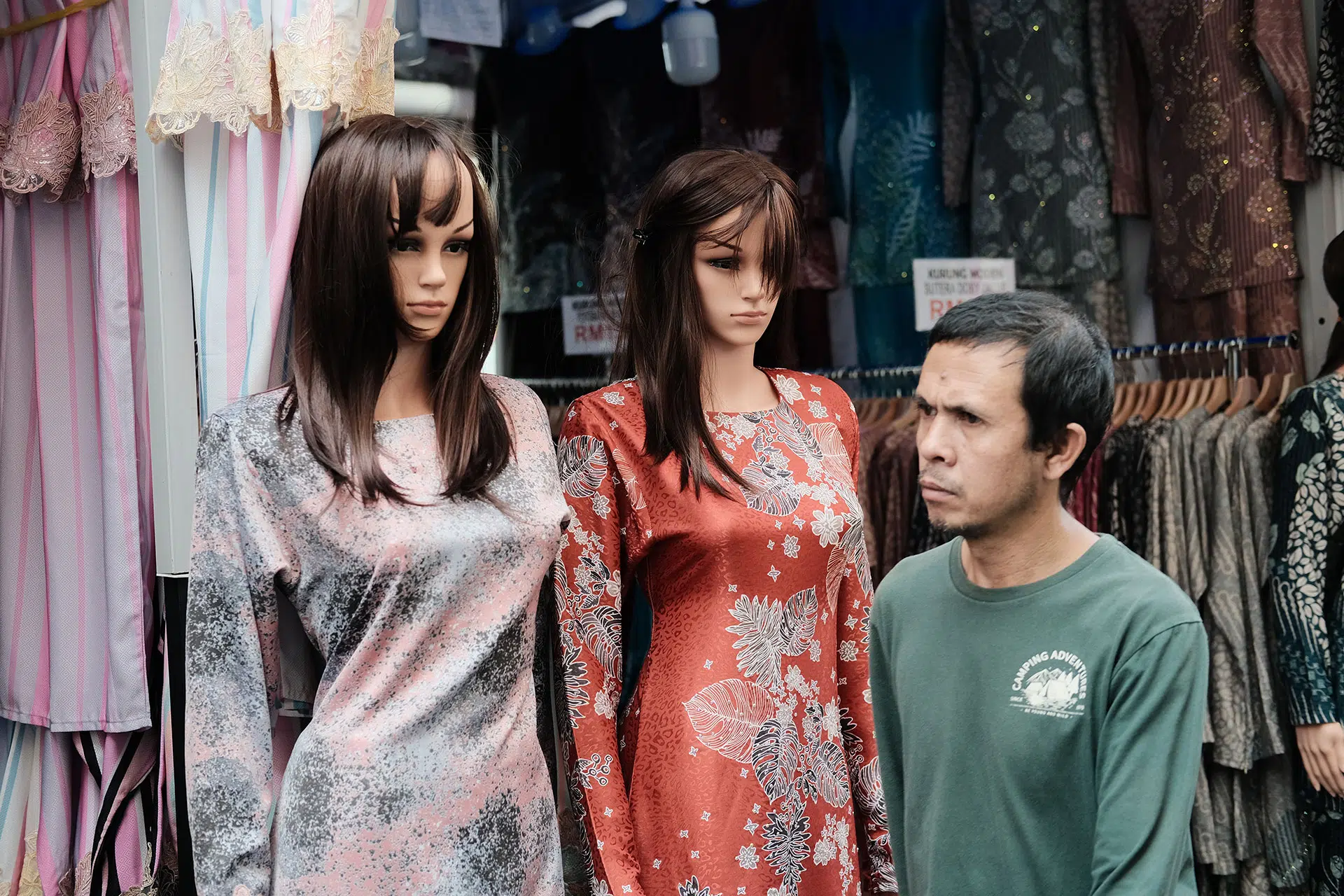Feeling uninspired with your street photography? It happens to the best of us. But fret not, because I’m here to reignite your creativity with seven of the best street photography composition techniques. Street photography is about more than just capturing scenes; it’s about storytelling, conveying emotions, and capturing the essence of urban life. Mastering these techniques can transform your photos from mundane to magnificent. So, grab your camera, hit the streets, and let’s explore these techniques together to enhance your next outing.
Creative composition is essential for capturing captivating street photographs that tell compelling stories of urban life. In this article, we’ll delve into five key creative composition techniques for street photography: using shadows, capturing gestures and expressions, incorporating foreground elements, creating silhouettes, and exploring juxtaposition. Getting inspiration by reading some of the best street photography photobooks might also help.
Creative Composition Techniques and Ideas for Street Photography
These techniques will help you add depth, emotion, and visual interest to your images, allowing you to create standout photos that truly capture the essence of the streets. Most photos are shot during my weekly street photography in Kuala Lumpur, exploring every best spot to capture moments on the street. Here are the 7 best creative composition techniques & street photography ideas that you can try for your next street outing.
1. Motion Blur
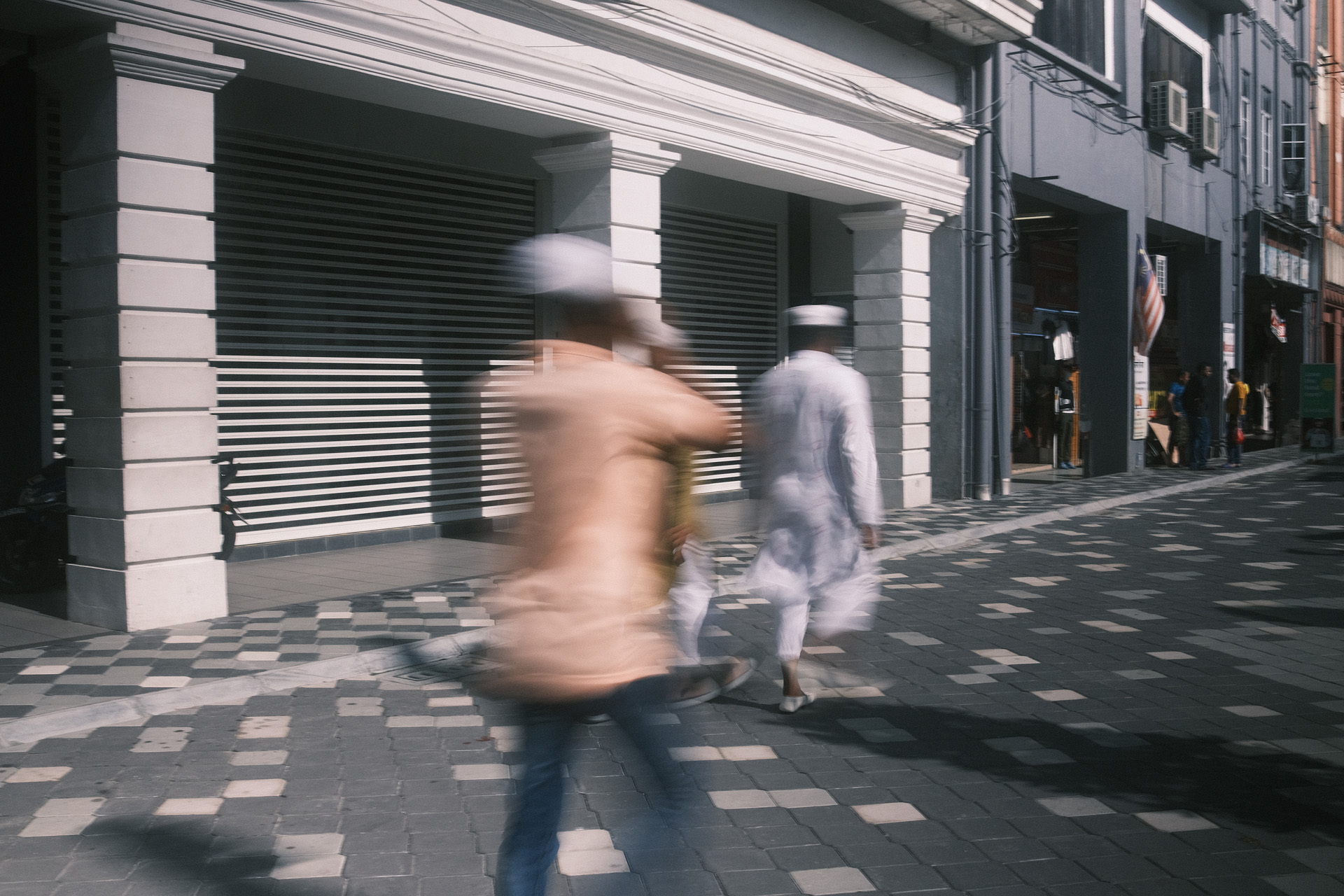
Motion blur is a captivating technique in street photography that adds a dynamic and energetic element to your images. It involves capturing moving subjects in such a way that they appear blurred, while the rest of the scene remains sharp. This contrast between the sharpness and blur creates a sense of motion and speed, bringing a sense of life and movement to your photos.
To achieve motion blur, you need to use a slower shutter speed. This allows the camera’s sensor to capture the movement of your subject over time. Shutter speeds of 1/30th of a second or slower are a good starting point, but you may need to experiment to find the perfect speed for your scene.
Since you’re using a slow shutter speed, it’s essential to keep your camera as stable as possible to avoid unwanted blur in the static parts of your scene. Use a tripod or brace your camera against a solid surface to keep it steady. Motion blur can be included as one of your street photography project ideas whenever you’re running out of ideas of what to shoot.
By mastering the technique of motion blur, you can add a unique and dynamic element to your street photography. This is one of the best creative composition techniques that allows you to capture the movement and energy of urban life in a visually striking way. The skillful use of motion blur can elevate your street photography, making it more engaging and impactful by conveying a sense of motion and activity that is often characteristic of bustling city environments.
2. Negative Space
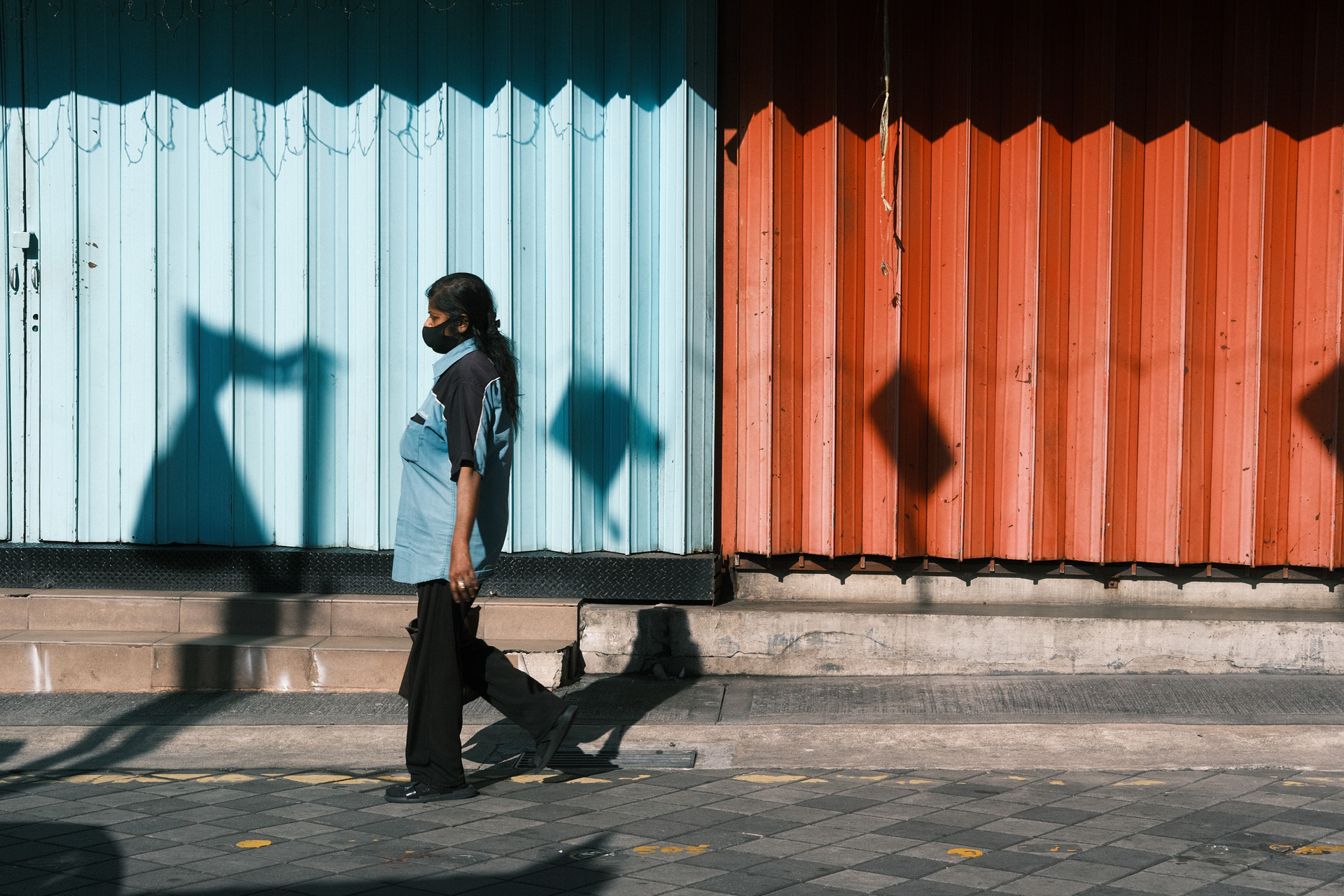
Negative space is a crucial element in the best creative composition techniques for street photography. It refers to the area around and between the subjects in your image. By effectively utilizing negative space, you can create a minimalist and impactful composition that draws attention to your subject, creates a sense of isolation or solitude, and adds an artistic touch to your photos.
When your negative space has a distinct color or a strong contrast with your subject, it can add visual interest and depth to your image. Positioning your subject so that it’s surrounded by negative space is a powerful way to make your subject stand out and become the focal point of the image.
It’s important to remember that while negative space is often thought of as space, it should still be balanced using the Rule Of Thirds in positive space (your subject) to create a harmonious composition. This balance is a key aspect of the best creative composition techniques in street photography, helping to create visually striking and emotionally resonant images.
3. Foreground Elements
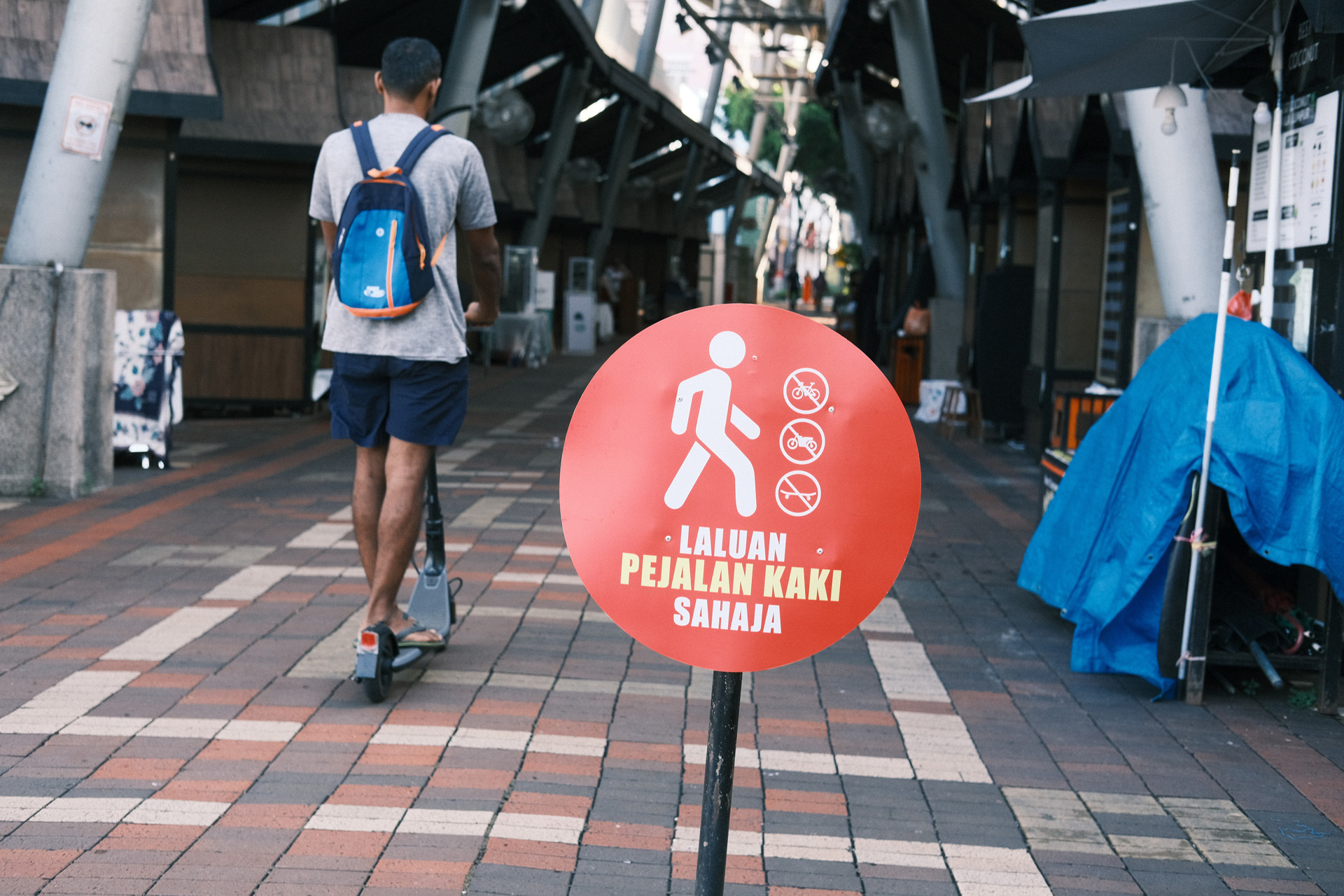
Foreground elements are considered one of the best creative composition techniques for street photography, as they can add depth, context, and visual interest to your images. By incorporating foreground elements, you can create more immersive and engaging photographs that draw the viewer into the scene and enhance the overall composition.
When searching for foreground elements, look for objects or people that can serve as a visual anchor for your composition. These elements can help lead the viewer’s eye into the scene or frame your main subject, adding a sense of depth and dimension to your photograph. For example, a row of street lamps or a line of parked bicycles can create a strong leading line that guides the viewer’s gaze through the image, creating a more dynamic composition.
Foreground elements can also help create a sense of scale and perspective in your images. By including objects or people in the foreground, you can give viewers a point of reference to understand the size and scope of the scene. This can add a sense of realism and immediacy to your photographs, making them more relatable and engaging.
When incorporating foreground elements, pay attention to their placement and how they interact with the rest of the scene. Experiment with different angles and perspectives to find the most compelling composition. And don’t be afraid to get creative – sometimes, the most interesting foreground elements are found in the most unexpected places, adding an element of surprise and intrigue to your images.
4. Silhouettes
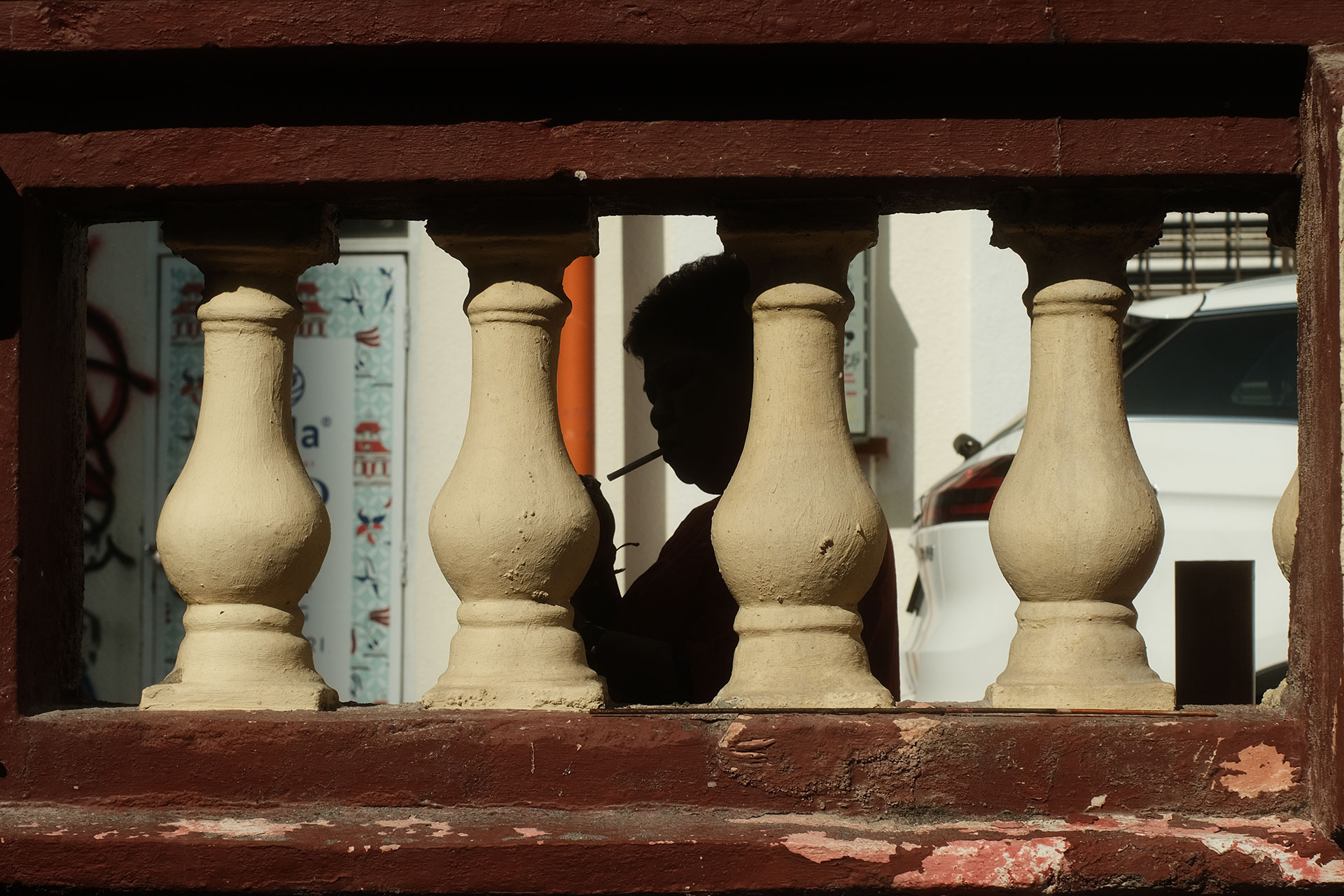
Silhouettes are a powerful and artistic technique in street photography, offering a unique way to capture the essence of a moment. By using backlighting, you can create striking silhouettes of your subjects against the urban backdrop. This technique works best when the light source is behind your subject, such as the sun setting behind a building or a streetlight casting a long shadow.
Silhouettes can add a sense of mystery and intrigue to your images, as the lack of detail in the subject leaves much to the viewer’s imagination. This allows the viewer to interpret the story behind the silhouette, creating a more engaging and thought-provoking image.
In addition to creating a sense of mystery, silhouettes can also evoke a range of emotions depending on the context. A lone figure walking down a deserted street may evoke feelings of solitude or contemplation, while a group of friends laughing and chatting may convey a sense of camaraderie and joy.
To capture compelling silhouettes, pay attention to the positioning of your subject and the light source. Experiment with different angles and perspectives to find the most striking composition. And don’t be afraid to wait for the right moment to capture the perfect silhouette, as patience can often lead to the most impactful images.
5. Juxtaposition
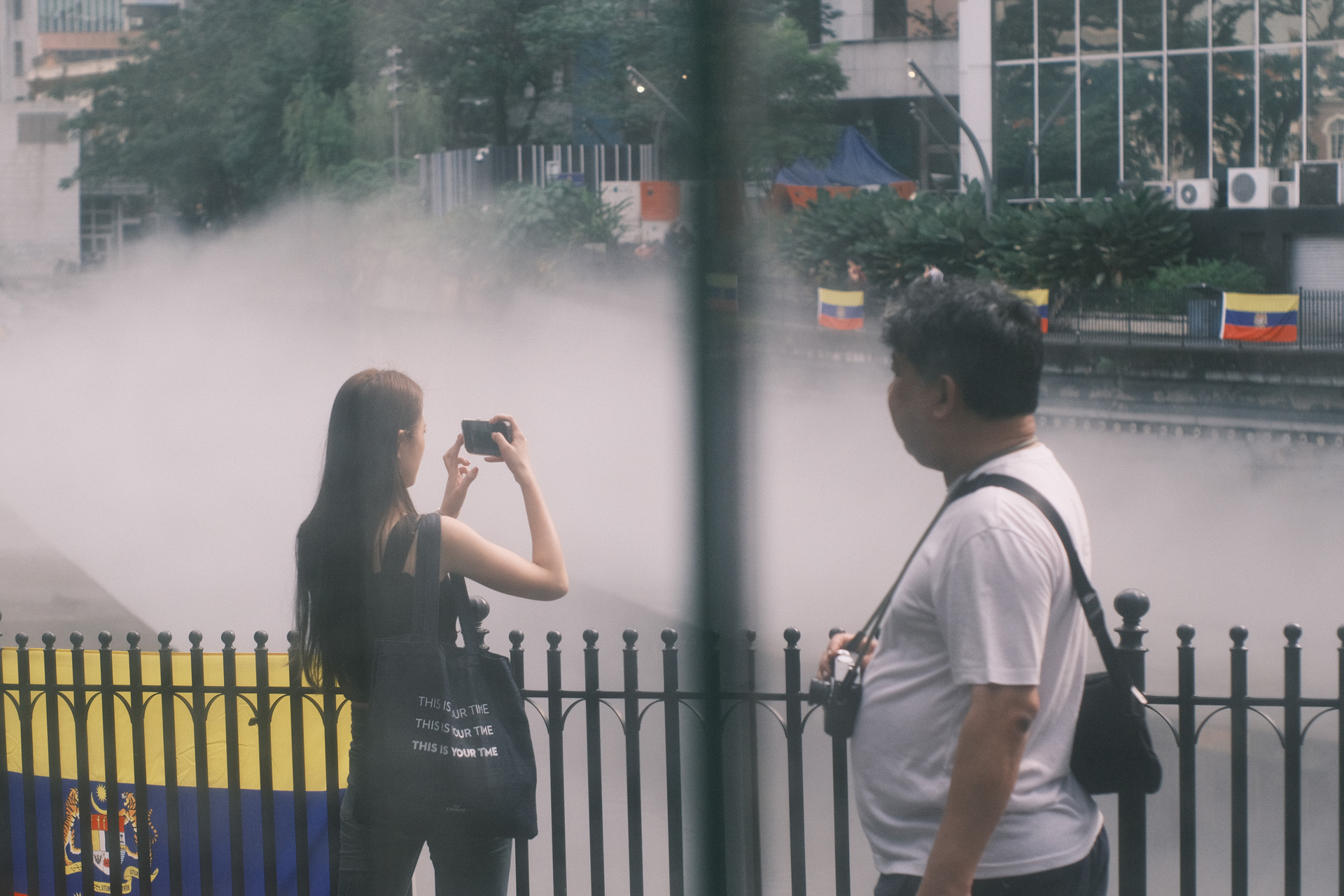
Juxtaposition is one of the best creative composition techniques for street photography, as it allows you to capture contrasting elements or subjects within the same frame, creating visually striking images that tell a story or evoke strong emotions. Enable the Grid guideline on your camera and use the Rules Of Thirds. This technique relies on the juxtaposition of elements such as light and shadow, old and new, or different emotions or actions, making it a powerful tool for creating compelling street photographs. Make use of these creative composition techniques in your next street photography project ideas.
For example, you might capture a scene where a modern skyscraper looms over a historic building, highlighting the contrast between old and new architecture. This juxtaposition can create a sense of nostalgia or progress, depending on the viewer’s perspective. Similarly, you could photograph a person in a business suit walking past a street performer in colorful attire, illustrating the contrast between the formal and the informal, the mundane and the extraordinary.
Juxtaposition can also be used to create irony or humor in your images. For instance, you might photograph a sign that says “no smoking” with a person smoking right next to it, highlighting the contradiction between the sign and the person’s actions. This kind of juxtaposition can add depth and layers to your images, making them more engaging and thought-provoking.
To use juxtaposition effectively in your street photography, pay attention to your surroundings and look for interesting contrasts or contradictions. Be patient and wait for the right moment to capture the juxtaposition in a way that is visually compelling and tells a story. By mastering the art of juxtaposition, you can create street photographs that stand out and resonate with viewers.
6. Layering
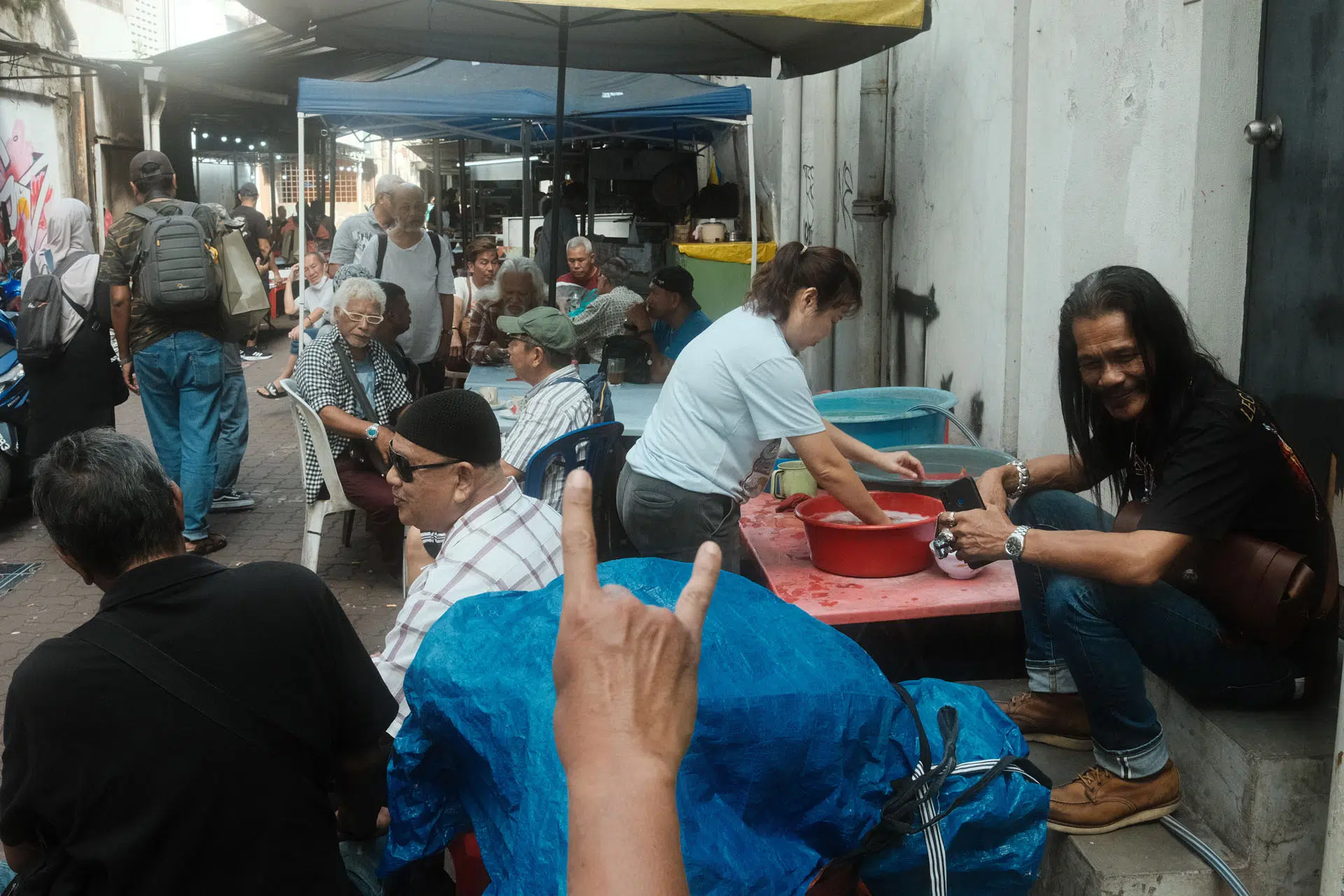
Layering is considered one of the best creative composition techniques for street photography, as it involves capturing multiple elements or subjects at different distances from the camera, creating depth and complexity in the image. This technique adds visual interest and can help tell a more compelling story.
One effective way to achieve layering is by incorporating foreground, mid-ground, and background elements in your composition. For example, you could capture a person walking in the foreground, a group of people chatting in the mid-ground, and a striking architectural feature in the background. This creates depth in the image and gives the viewer more to look at and explore, enhancing the overall composition.
Another approach to layering is to capture reflections or shadows that overlap with the main subject, adding an additional layer of visual interest. You could also use doorways, windows, or other frames within the frame to create layers and add depth to your composition.
Layering adds complexity and depth to your street photography, creating more dynamic and engaging images. Experiment with different compositions and perspectives to find interesting ways to incorporate layering into your photos, and watch as your images come to life with depth and dimension.
7. Point of View
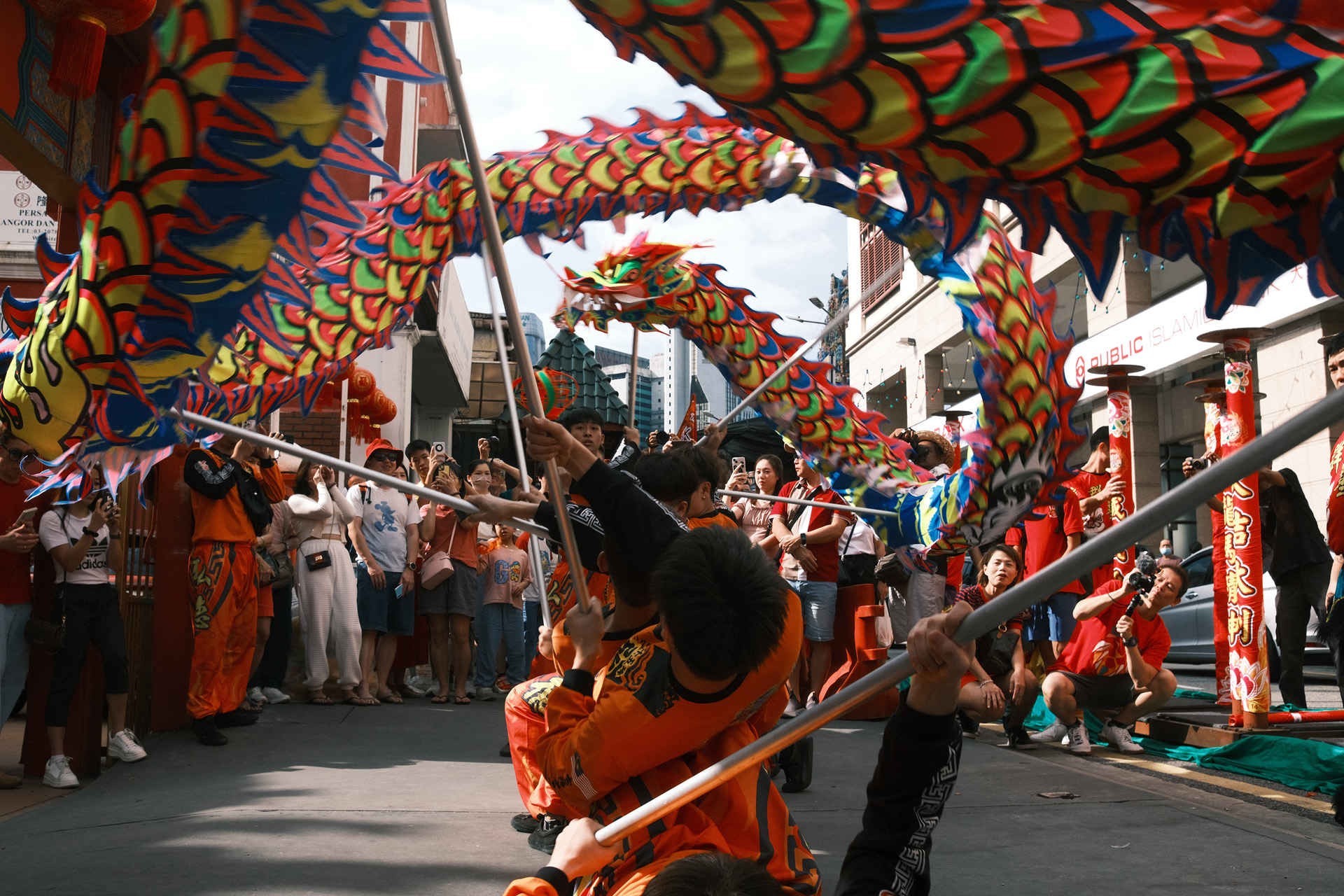
Point of view is a powerful compositional tool in street photography that can significantly impact the perception of your images. By altering your shooting angle, you can create entirely different moods and narratives.
Shooting from a low angle can make your subject appear larger and more dominant, adding a sense of grandeur or authority. It can also emphasize the height of buildings or structures, making them feel towering and impressive. This angle is great for capturing the hustle and bustle of city streets, giving a worm’s-eye view of the world.
On the other hand, shooting from a high angle or a bird’s-eye view can provide an overview of the scene, showing the layout of the streets and the movement of people. It can also make your subject appear smaller and more vulnerable, providing a sense of scale and context within the urban environment.
Experimenting with different points of view can lead to discovering unique and creative compositions in street photography. Each angle tells a different story and evokes different emotions, so it’s worth exploring various perspectives to find the one that best suits your artistic vision.
Conclusion
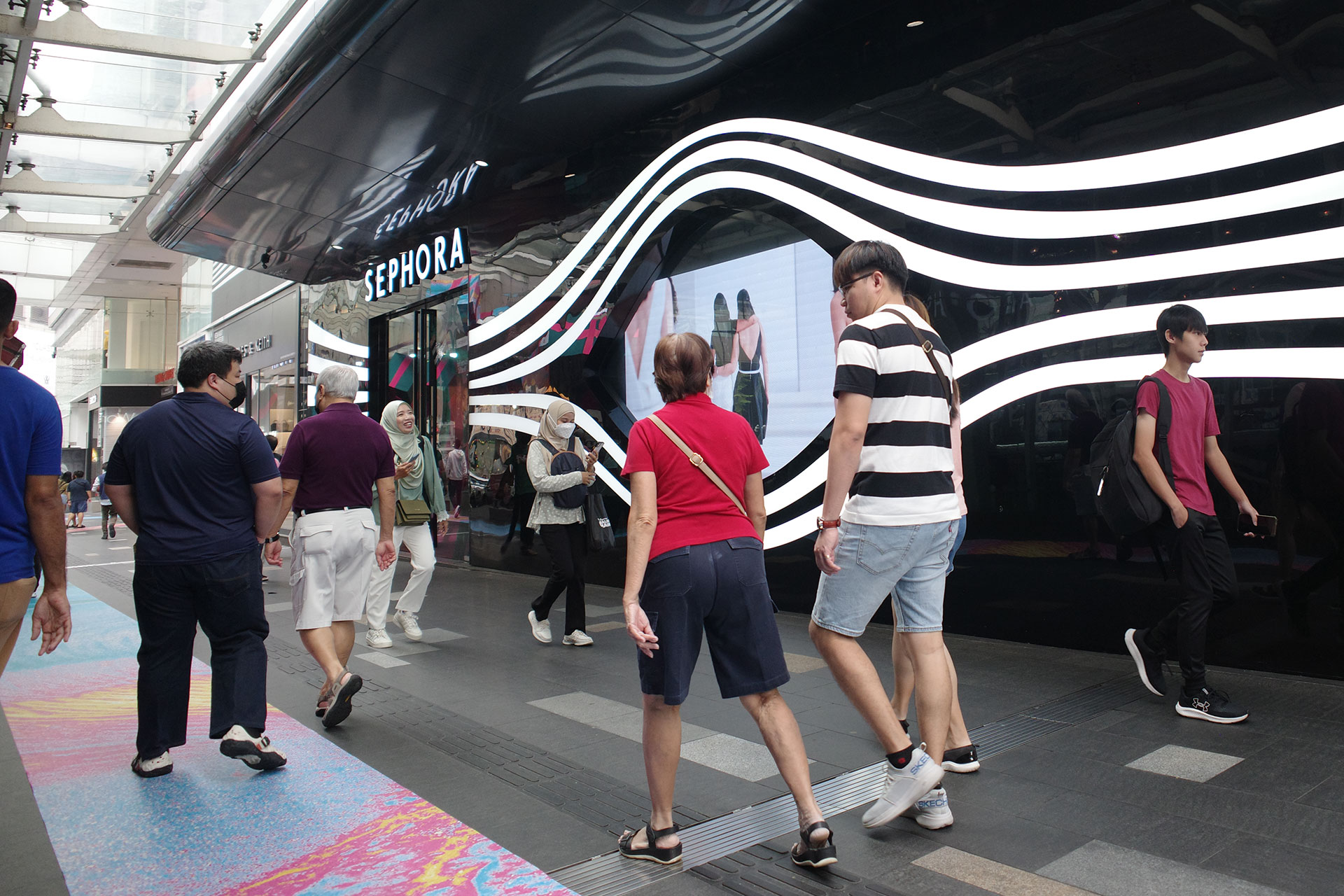
Mastering creative composition techniques is paramount for enhancing your street photography. Through innovative use of shadows, capturing authentic gestures and expressions, integrating foreground elements, experimenting with silhouettes, and juxtaposing contrasting elements, you can inject fresh vitality into your street photography.
Expanding your knowledge of basic photography techniques and compositions is essential for mastering street photography. Additionally, it’s worthwhile to explore the best street photography cameras such as the Fujifilm X100VI or Ricoh GRIII and suitable lenses for capturing dynamic street scenes. A portable, discreet camera and versatile lens can significantly enhance your ability to capture authentic moments and unique perspectives.
These techniques not only enhance the visual appeal of your images but also enable you to convey compelling narratives and evoke powerful emotions. So, the next time you venture out to capture street scenes and encounter a creative block, remember these techniques and allow your creativity to flourish. With dedication and experimentation, you’ll soon discover yourself capturing striking street photographs that set you apart from the rest.


